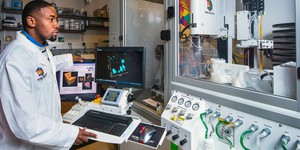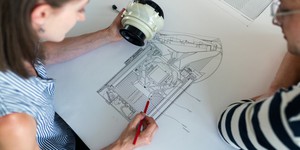Abstract
The funny thing about friction is that you couldn't get anywhere without it, yet it still acts to slow you down as you're getting there. Here is an easy project to measure the effects of friction.Summary
Andrew Olson, Ph.D., Science Buddies
Sources
This project is based on:
- Okita, N.A., 2003. Effect of Friction on Objects in Motion, California State Science Fair Abstract. Retrieved November 8, 2006.
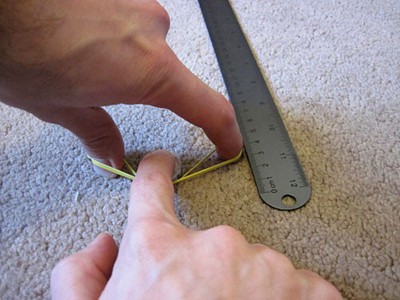
Objective
The goal of this project is to investigate how far equally-weighted objects with different surface textures will slide when propelled across surfaces with different textures.
Introduction
Friction is a force between objects that opposes the relative motion of the objects. In this project, you will be studying kinetic friction (also called sliding friction). When two objects are moving relative to one another, kinetic friction converts some of the kinetic energy of that motion into heat. You can feel the heat of kinetic friction if you rub your hands together.
The same thing happens when two objects are sliding past one another-for example, when you push a box across the floor. Part of the energy of your pushing moves the box, and part of the energy is lost to kinetic friction. How much energy is lost? What factors do you think will act to increase or decrease kinetic friction?
Think about what happens if you push a box across a smooth, polished surface like a wooden floor. Now, think about what happens if you push the same box across a rough, carpeted surface. Which surface will require you to push harder? As shown in Figure 1 below, you will have to push harder on the rough surface due to higher friction.
 Image Credit: Ben Finio, Science Buddies / Science Buddies
Image Credit: Ben Finio, Science Buddies / Science BuddiesDiagram of a person pushing a box on a smooth surface experiencing lower friction forces (left) compared to a box being pushed on a rough surface (right). A smaller force is needed to overcome the friction force on a smooth surface, and a larger force is needed to overcome the larger friction force on a rough surface.
Figure 1. Friction is higher on rough surfaces than it is on smooth surfaces.
Now, think about what happens if, instead of pushing an object continuously, you slide it across a surface by giving it a big initial push. Will the amount of kinetic friction affect how far the object goes? What types of materials will have the highest friction? In this project you will find out by using a rubber band to launch objects across different surfaces.
Terms and Concepts
To do this project, you should do research that enables you to understand the following terms and concepts:
- Kinetic (sliding) friction
- Forces
More advanced students should also study:
- Newton's laws of motion
- Normal force
- Coefficient of friction
Questions
- How is friction produced?
- What effect does friction have on the speed of a rolling object?
- What types of surfaces will produce the most friction when they rub against one another? What types of surfaces will produce the least amount of friction?
- When you want to go down a slide at the playground, you first have to climb up a ladder, working against gravity to get to the top. When you slide down, only part of the energy of your climb goes into the speed of your slide. What happens to the rest of the energy of your climb?
Bibliography
- This webpage has a good introduction to friction:
Darvill, A., date unknown. GCSE Physics: Energy, Forces & Motion: Friction, Broadoak Community School, Weston-super-Mare, England. Retrieved November 8, 2006. - Wikipedia also has an article on friction:
Wikipedia contributors, 2006. Friction, Wikipedia, The Free Encyclopedia. Retrieved November 8, 2006. - More advanced students should also study Newton's three laws of motion, which are introduced in these four lessons from The Physics Classroom:
Henderson, T., (n.d.). Newton's Laws, The Physics Classroom. Retrieved accessed May 9, 2014.
Materials and Equipment
To do this experiment you will need the following materials and equipment:
- Various surfaces (with different textures) to test, e.g.:
- Wood
- Felt
- Aluminum foil
- Sandpaper
- Some other surface—use your imagination!
- Note: You'll need enough material to cover your test area. Objects will be propelled over the test surface with rubber-band power. You will also need tape to hold the test materials down to your work area.
- Alternatively, instead of using small pieces of material, you could test different surfaces like various floors, carpets, counters, and tabletops. In this case, you will have to move around to do your experiment.
- Objects (with different textures) to test, e.g.:
- Wood block
- Plastic block
- Sponge
- Rubber eraser
- Some other object—use your imagination!
- Weights (e.g., coins, washers, etc.) to equalize mass of objects
- Gram scale or homemade balance (to make sure objects have equal mass)
- Rubber band
- Rubber band launcher:
- For small objects, this can be your hand, inverted, with the rubber band stretched between your thumb and forefinger. Use a ruler to make sure that the distance between your thumb and forefinger is the same each time.
- For larger objects, you'll need to stretch the rubber band between two rigid supports at the level of your test surface.
- In both cases, use a ruler to measure how far back you stretch the rubber band when launching the objects so that you are consistent for each test.
- Ruler
- Tape measure
Experimental Procedure
- Cover the test area with the surface material to be tested. Use tape to hold the edges of the material down, so it does not slide around.
- Set up your rubber-band launch station at one end of the test area.
- With the object in contact with the test surface, pull back on the rubber band to some measured distance. Use the same amount of stretch for each object. This insures that the launching force will be the same for each test object. Figure 2, below, shows an example test setup using a ruler.

Figure 2. The test setup. Use a ruler to make sure you pull the object back the same distance each time, and to measure how far the object travels.
- Launch the object horizontally, so that it slides over the test surface. If the object does not stay in contact with the test surface, try again. You may need to use less force, or adjust the height of the rubber band above the surface.
- Measure and record the distance the object travels. Make a data table in your lab notebook to record all of your results.
- Test each object at least 10 times (more is better).
- Calculate the average distance each object travels. More advanced students should also calculate the standard deviation.
- Make a bar graph showing the average distance traveled (y-axis) vs. surface combination (test surface and object). Arrange the bars in order of increasing average distance traveled.
- Which surface combinations produced the most kinetic friction?
- Which surface combinations produced the least kinetic friction?
- Can you explain your results in terms of the physical properties of the materials you tested?
Ask an Expert
Global Connections
The United Nations Sustainable Development Goals (UNSDGs) are a blueprint to achieve a better and more sustainable future for all.
Variations
- What happens if you hold the test surface and the object constant, but change the weight of the object (by attaching progressively more weight on top of the object)? Make a graph of distance traveled vs. object weight under these conditions.
- Use a spring scale to measure the force needed to drag various objects across different surfaces. Record both the transient force needed to overcome static friction (Figure 3, left), and the maintained force necessary to counteract sliding friction (Figure 3, right). How do these two forces vary with different surfaces? How do these forces vary with the weight (normal force) of the test object? How do these forces vary with the surface area of the test object?
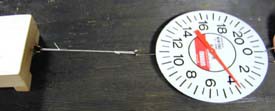 Image Credit: North Carolina State University Department of Physics / Copyrighted
Image Credit: North Carolina State University Department of Physics / Copyrighted
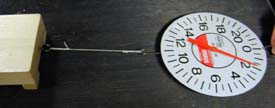 Image Credit: North Carolina State University Department of Physics / Copyrighted
Image Credit: North Carolina State University Department of Physics / Copyrighted
Figure 3. Using a spring scale to measure static friction (left) and sliding friction (right) of an object.
Careers
If you like this project, you might enjoy exploring these related careers:



